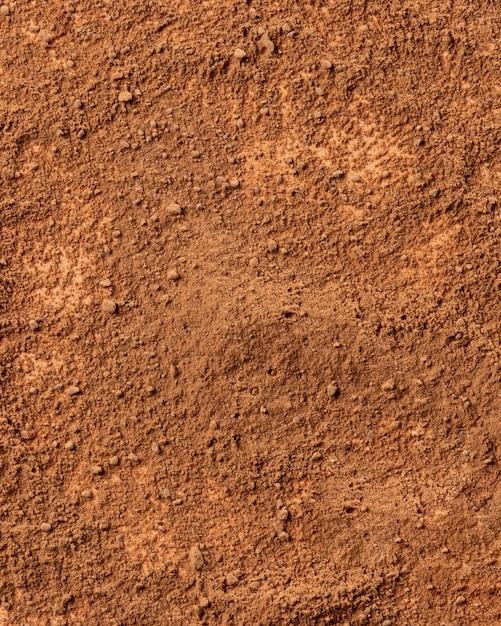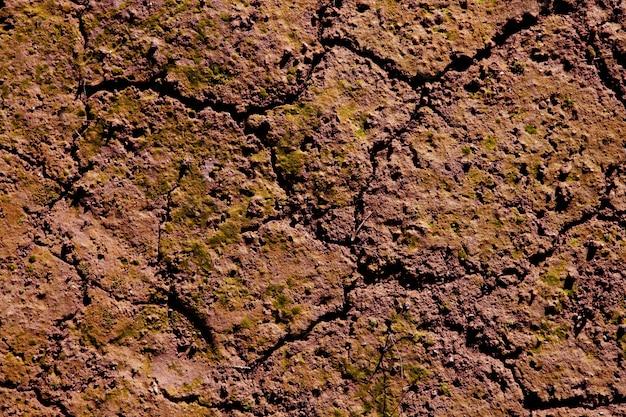Clay soil, like other types of soil, can vary in its color and appearance. While there may not be a simple answer to the question of “what color is clay soil,” there are some common characteristics that can help identify it. In this blog post, we will explore the color and properties of clay soil, along with its advantages and challenges for gardening.
Soil color is influenced by various factors, including the minerals and organic matter present. Clay soil, which is composed of fine particles, can range in color from light gray to dark brown. Its color can also be influenced by the presence of iron and other compounds. Understanding the color of clay soil can provide valuable insights into its composition and potential uses in landscaping and agriculture.
Join us as we delve into the fascinating world of soil and uncover the color secrets of clay soil. Whether you’re a gardening enthusiast, a landscape designer, or simply curious about the natural world around you, this blog post will offer valuable information and insights. So let’s dig in and discover the true color of clay soil!
What Is the Colour of Clay Soil
Clay soil, oh clay soil, what a colorful character you are. If you’ve ever had the pleasure of digging in the dirt, you’ve likely encountered this vibrant soil type. So what exactly is the color of clay soil? Let’s dive in and unearth the truth!
A Kaleidoscope of Hues
Clay soil comes in many shades, making it a true chameleon in the world of dirt. Depending on its composition and surrounding conditions, clay can exhibit colors ranging from soft sandy yellows to deep earthy reds. It’s like Mother Nature’s very own paint palette!
The Role of Iron
One key player in clay soil’s color game is none other than iron. As clay forms and weathers over time, it interacts with iron minerals present in the environment. This chemical reaction can imbue the soil with a reddish hue, giving it a rustic charm that would make even the most seasoned interior designer envious.
Organic Matter Influence
Another factor that influences the color of clay soil is its organic matter content. As plants and organisms decompose, they leave behind their remnants in the soil. This organic matter can impart a dark, almost chocolatey color to the clay, making it look like a delectable treat for the avid gardener.
Moisture Matters
But wait, there’s more! The moisture level of the clay soil also plays a starring role in its appearance. When clay soil is wet, it can take on a darker hue, resembling the color of a stormy night sky. As it dries, it lightens up, transforming into various shades of brown, beige, or even a hint of pink. Talk about playing hard to get!
Painting with Clay Soil
While we may not be using clay soil as a medium for our next masterpiece, understanding its color can help us decipher its properties and determine its suitability for various applications. Different colors may indicate different levels of fertility, drainage, or compaction, offering valuable insights for gardeners, farmers, and construction crews alike.
Clay soil is a canvas of colors, reminiscent of an enchanting painting brought to life by the elements. Its shades and tones tell a tale of iron, organic matter, moisture, and time. So, the next time you come across clay soil, take a moment to appreciate its vibrant personality and all the wonders it holds within.
FAQ: What Is The Colour of Clay Soil
Welcome to our comprehensive FAQ-style guide to understanding the color of clay soil! In this section, we will answer some commonly asked questions about the color variations, properties, and characteristics of clay soil. So, let’s dig right in!
Q: Which Soil is Grey in Colour
A: While clay soil is commonly associated with shades of red, it can also appear grey. The color of soil is influenced by various factors, including mineral content, organic matter, and moisture levels. So, don’t be surprised if you come across grey clay soil in certain regions!
Q: What Color is Healthy Soil
A: Healthy soil can come in various colors, ranging from brown to dark black. Darker soil often indicates a higher organic matter content, which is beneficial for plant growth. However, depending on the specific region, even reddish or greyish clay soil can be fertile and healthy when properly managed.
Q: Is Darker Soil Better
A: Darker soil generally indicates a higher organic matter content, which means it has more nutrients available for plants. However, the “better” soil ultimately depends on the specific needs of the plants you are cultivating. Clay soil, regardless of its color, can be fertile and productive when properly cared for.
Q: Why is Potting Soil So Dark
A: Potting soil tends to be darker due to the addition of organic matter, such as decomposed plant material, compost, or peat moss. This dark color not only enhances the appearance but also improves water retention and nutrient availability, making it ideal for potted plants.
Q: Why is Australian Soil Red
A: The vibrant red color of Australian soil is primarily caused by the presence of iron oxide. This iron oxide, also known as rust, gives the soil its unique hue. The warm climate and long periods of weathering contribute to the development of red soil throughout Australia.
Q: Can You Turn Clay into Topsoil
A: While clay soil and topsoil differ in their properties, it is possible to improve clay soil and turn it into topsoil over time. By adding organic matter, incorporating compost, and implementing proper soil management practices like regular aeration and mulching, you can enhance the fertility and structure of clay soil.
Q: What are the Three Properties of Sandy Soil
A: Sandy soil, characterized by larger particle size, exhibits particular properties:
- Drainage: Sandy soil drains quickly due to its coarse texture, which can be both advantageous and challenging depending on the plants you are growing.
- Aeration: The coarse particles of sandy soil allow for good airflow, promoting healthier root development for most plants.
- Low Nutrient Retention: Sandy soil tends to have lower nutrient-holding capacity, necessitating regular fertilizer application.
Q: What Causes Grey Soil
A: Grey soil can be a result of several factors. It often indicates poor drainage or excessive moisture content, leading to a lack of oxygen in the soil. Additionally, certain minerals and organic matter can contribute to the greyish coloration of soil.
Q: What are the Five Types of Soil
A: The five main types of soil are:
- Sandy Soil: Coarse-textured soil with good drainage.
- Clay Soil: Fine-textured soil with high water retention.
- Silt Soil: Medium-textured soil with balanced properties.
- Peaty Soil: Organic-rich soil with high moisture content.
- Loamy Soil: Balanced mixture of sand, silt, and clay with excellent fertility.
Q: What Color is Clay Soil
A: Clay soil can appear in various colors, typically ranging from reddish-brown to grey. The specific color depends on factors such as mineral composition, organic matter content, and regional variations.
Q: What are Six Types of Soil
A: Here are six common types of soil based on texture and composition:
- Sandy Soil: Gritty and loose soil with good drainage.
- Clay Soil: Dense and sticky soil that retains water.
- Silt Soil: Smooth and fertile soil that holds moisture well.
- Peaty Soil: Dark and organic-rich soil found in wet areas.
- Chalky Soil: Alkaline soil with high calcium carbonate content.
- Loamy Soil: Well-balanced soil with a mixture of sand, silt, and clay.
Q: What are the Seven Types of Soil
A: The seven types of soil, classified based on composition and characteristics, are:
- Sandy Soil
- Clay Soil
- Silt Soil
- Peaty Soil
- Chalky Soil
- Loamy Soil
- Saline Soil
Each type has its own unique properties and suitability for different plant species.
Q: What is Heavy and Light Soil
A: “Heavy” and “light” are terms used to describe the texture and weight of soil.
- Heavy soil, such as clay soil, feels dense and sticky when wet, and it tends to compact easily, making it challenging to work with.
- Light soil, like sandy soil, feels gritty and loose, allowing for better drainage but often requiring more frequent irrigation and fertilization.
Q: What are the Ten Types of Soil
A: The following ten types of soil reflect a broad classification based on composition, texture, and regional variations:
- Sandy Soil
- Clay Soil
- Silt Soil
- Peaty Soil
- Chalky Soil
- Loamy Soil
- Saline Soil
- Acidic Soil
- Alkaline Soil
- Black Soil
Each type poses different advantages and challenges for gardeners, influencing the suitability for specific plants and agricultural practices.
Q: What Does Sandy Soil Feel Like
A: Sandy soil feels gritty to the touch due to its larger particle size. When dry, it tends to crumble easily, and when wet, it feels loose and slightly coarse.
Q: Which is Black Soil
A: Black soil, also known as “black cotton soil” or “vertisol,” is a type of fertile soil that has a dark color due to the presence of high organic matter content. It tends to be clayey and retains moisture well, making it highly suitable for agricultural purposes.
Q: What is The Color of Sandy Soil
A: Sandy soil can vary in color, typically ranging from light beige to yellowish-brown. The color may be influenced by the mineral composition and the presence of organic matter within the soil.
Q: Can I Put Topsoil Over Clay
A: Yes, you can add topsoil over clay soil to improve its fertility and texture. Applying a layer of topsoil can enhance drainage, increase nutrient availability, and create better conditions for plant roots to grow. However, it’s essential to ensure proper blending and compacting of the topsoil with the underlying clay soil.
Q: What Do Clay Soils Look Like
A: Clay soils have a fine texture and feel smooth to the touch when moist. When dry, they are often hard and compacted, forming cracks as they shrink. The color of clay soil can vary, but it typically falls within the range of reddish-brown to grey.
Q: Why is Black Soil Black
A: Black soil owes its dark color to the presence of high organic matter content, including decomposed plant material, compost, and humus. This organic matter enriches the soil with nutrients, enhances moisture retention, and promotes healthy plant growth.
Q: What Grows Best in Clay Soil
A: While clay soil can pose challenges, it also offers advantages for growing certain plants. Plants with deep root systems, such as trees, shrubs, and some perennials, tend to thrive in clay soil. Additionally, crops like beans, broccoli, and cabbage can benefit from the moisture-retaining properties of clay soil.
We hope this FAQ-style guide has answered your questions about the color and characteristics of clay soil. Remember, regardless of its color, clay soil can be managed and improved to provide a fertile foundation for your gardening endeavors. Happy planting!

